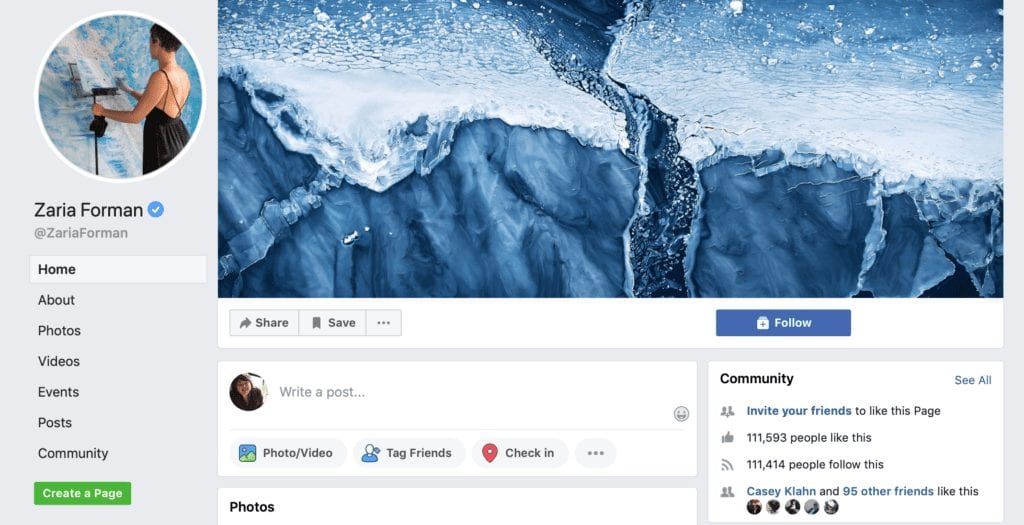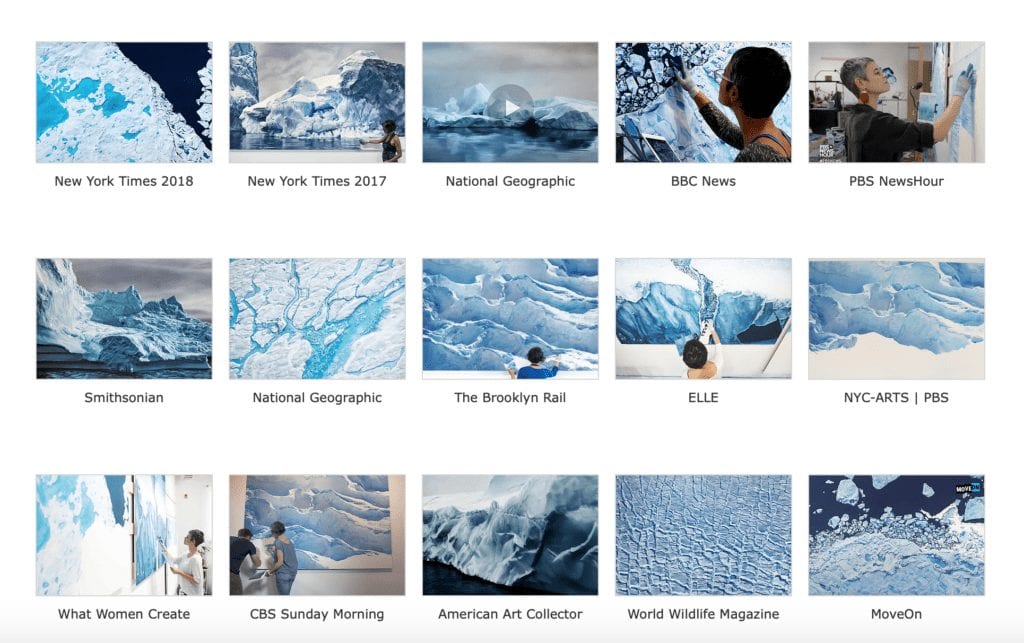
How did Ashley Longshore get 217,000 Instagram followers? How did Zaria Forman land 111,600 Facebook followers?
These are the kinds of questions that keep me awake at night, and I try to use reverse engineering to answer them. I’m talking about combing the Internet for great artist success stories like these, then digging through the artists’ websites and other sources to figure out how they got where they are today.
Here’s one of the most valuable lessons I’ve learned from this process: The artists who have huge fan bases—thousands of fans and followers, which undoubtedly translate into healthy sales—have all earned lots of media exposure. In other words, they’ve landed features and sometimes cover stories in magazines, on TV, on the radio, on podcasts, and in online magazines and blogs. Media exposure has introduced these artists to far more potential collectors than all the social media and networking they could ever do. It’s true. The longer I’ve worked in art marketing, the more I have come to appreciate the exponential power of the media, especially now that “the media” is so digitized and diversified, giving us more opportunities than ever before. (Thank you, Internet.)
Now here’s the kicker: In the early days, Ashley and Zaria didn’t sit back and wait for the media to find them. They sought out media coverage, and they kept doing it until they became so well known that the media now comes to them for coverage. This means it’s entirely possible for you to get this kind of media exposure for yourself. Like them, you can take the initiative and take your work and your story directly to the producers. Media writers and producers are always looking for great stories, and they will welcome you with open arms if you have a compelling story that’s a match for their audience.
Which brings us to the first step in the process: researching venues. Start thinking like a media producer or editor, and ask yourself which media outlets—magazines, blogs, podcasts, etc.—have audiences that would be interested in your story and your art. Yes, art-related media venues are the obvious first choice, but naturally, you’ll want to narrow it down to those outlets that feature the kind of art you make. For example, if you paint traditional still lifes, don’t bother trying to get featured on an ultra-contemporary art blog.
Now start to think more broadly. What audiences might be interested in your story or your subject matter, as well as your art? For example, have you been living and creating art in the same community for many years? Your local news outlets and local or state business-related media might be interested in the “hometown entrepreneurial success” story. Did you start your career late in life? Maybe AARP would be interested in featuring you. Do you paint subjects that would interest a certain demographic, such as sailboats for sailing enthusiasts? I think you get the idea here. If you can find a creative reason why a media venue’s audience might be interested in your work, you’ve got the basis for a pitch letter. Start with smaller venues first, then work your way up.
Next step: Identify the owner/editor/writer/producer of the media venue and send him or her a pitch letter. For more traditional media, you might send an actual cover letter with some printed pictures. For more modern media, such as blogs and podcasts, an email with attachments is preferred. The key to getting exposure is to convince that media mogul that a story about you will be great for his or her audience. You do this by sending a pitch that explains a) the original “angle” or subject that you can provide, b) how the information will benefit the audience, and c) why your credentials make you worthy of coverage. Tip: Do not write, “I would love to be featured because I could really use the publicity.” Again, look at this from the media producer’s perspective and explain how featuring you will inform or entertain his or her audience.
Now, there are several ways you might end up getting coverage. Ideally, you’ll be interviewed, possibly even live on camera or over the air. However, you could also offer to write something for a blog or other publication. Just make sure you discuss the requirements with the media producer before you move ahead with writing something. It would be a shame for you to invest a lot of time and effort into creating something that ultimately does not meet the producer’s needs and therefore doesn’t get used.
Probably the hardest part of this process is waiting for a response once you’ve submitted your pitch. It’s not unusual to wait weeks or even months, depending on the popularity of the venue, before you get a response. If you haven’t heard back after a decent amount of time (two weeks at a minimum), you can and should follow up by email or phone, possibly more than once. If you’re polite and persistent, you just may land the coverage you crave.
Okay, yes, I admit, getting media coverage takes a lot of effort. You’ll discover and then reject many possible venues in the process of finding those that are right for you, and you’ll be refused many times along the way. But the payoff is huge. Zaria, whose stunning artwork is featured in these images, has a massive following, thanks to her persistence in landing media coverage. You can do this, too!



Leave a Reply